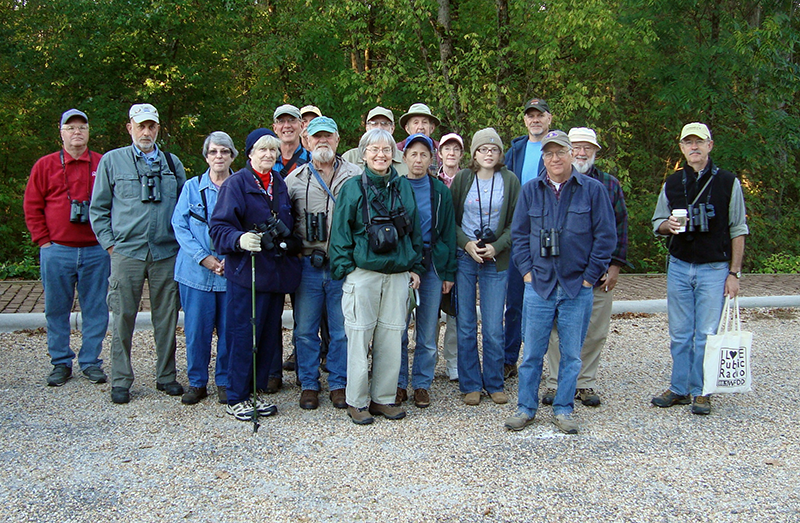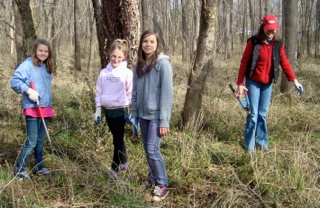Bethania Conservation Properties
One focus of Forsyth Audubon’s conservation efforts is on protected properties in the Town of Bethania. The town, community members, Piedmont Land Conservancy, The Conservation Fund of Arlington, Virginia, and the State of North Carolina partnered to acquire several tracts of land that now are owned by the State and managed by Bethania. Forsyth Audubon, through a committee comprised of Shelley Rutkin, Lois Schneider and Lisa Gould, worked with Bethania to develop a plan of conservation that embraces some of this land.
Walnut Bottom is the largest of these properties, comprising about 35 acres along the Muddy Creek floodplain. A trail begins at the Bethania Visitor Center and winds through bottomland woods and fields. Another 20 acres called Walnut Bluffs overlooks the creek nearby. Across Bethania-Rural Hall Road, the 60-acre Southwest Bluff and Bottomland tract is the most recent acquisition.

One project area centered on land management issues such as removal of foreign invasive plants and replacement with native species. Another area focused on educational activities and materials for the general public. Inventories of flora and fauna provided the foundation for these efforts. You can help build these inventories by sharing your bird and butterfly lists and photos with committee members.

by Lois Schneider
We have improved and maintained the area at the Visitor Center parking lot near the entrance to the Walnut Bottoms trail. We planted native flowers and shrubs and began efforts to remove exotic and invasive Multiflora Rose in order to encourage the growth of native plants. On subsequent workdays, we tackled the invasive roses, Chinese Privet, Oriental Bittersweet and Caleri Pear in other parts of the preserve. Also, live stakes of native shrubs and trees were planted along the banks of Muddy Creek to protect against erosion. We also cleared the area around the Witch Hazel that we planted a couple of years ago and beside the steps to the trail. In place of non-native weeds, we now have Foamflower, Columbine, Green-and-Gold, and Dwarf Crested Iris. Christmas ferns were also added.

by Lois Schneider
Native plants enhance wildlife habitat by providing blooms that attract pollinators and serving as host plants for butterflies and moths.